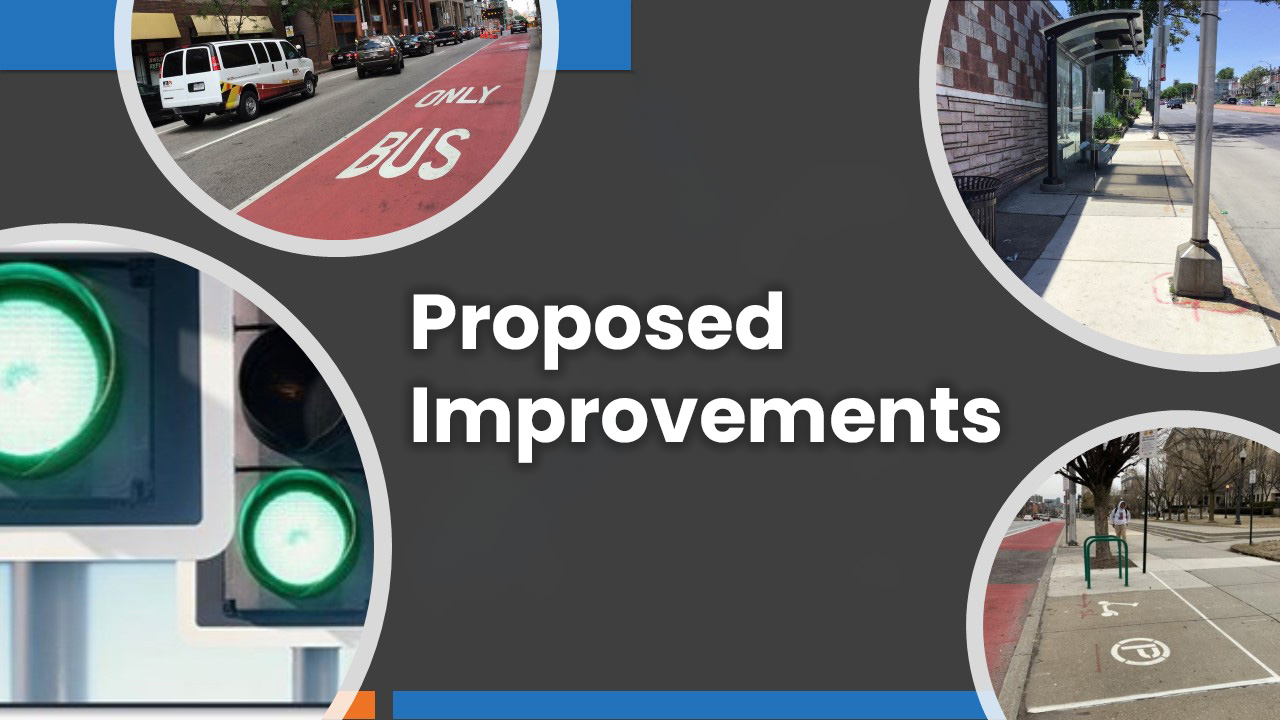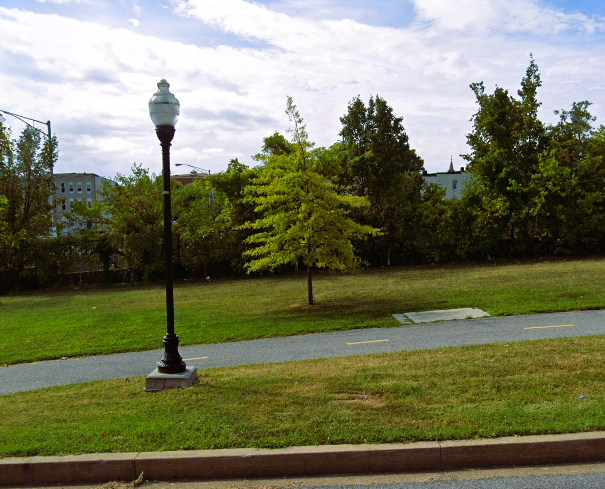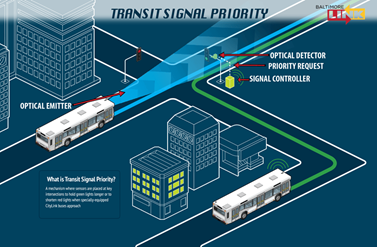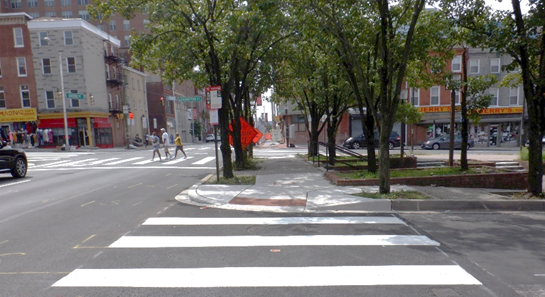The RAISE Project includes several elements to improve the reliability, speed, safety and accessibility of transit, in addition to bicycle and pedestrian safety and Americans with Disabilities Act (ADA) accessibility improvements. The Project applies strategies and design guidance from both the MTA Transit Priority Toolkit and the Baltimore City Complete Streets Manual to directly address existing challenges on the project corridor, which carries two of the region’s highest-ridership bus routes – the CityLink Blue and CityLink Orange lines. Together, these investments facilitate safer multi-modal travel along this critical corridor.

Proposed improvements include:
- Full-time and peak-period Dedicated Bus Lanes (DBLs), bus bulbs, and one queue jump on select congested segments along the CityLink Blue & CityLink Orange routes to enhance bus speed and reliability
- Transit Signal Priority (TSP) at up to 55 traffic lights along the corridor to prioritize bus movements
- Bus stop enhancements & pedestrian improvements including curb ramps and sidewalks at various locations, as well as ADA compliance upgrades, benches, trash cans, and pedestrian lighting at over 130 bus stop locations
- Signage Upgrades and wayfinding/real-time signs at high-transfer activity 'hubs'
- Bicycle safety improvements including separated sidepath infrastructure between Downtown Baltimore and West Baltimore MARC commuter rail station
Dedicated Bus Lanes (DBLs) and Bus Bulbs
The RAISE Project would implement full-time and peak-period Dedicated Bus Lanes (DBLs), bus bulbs and one queue jump along segments of the CityLink Blue & CityLink Orange bus routes, reducing transit delay, reducing conflicts between buses and vehicles, increasing on-time performance, and allowing shared use with bicycles. Dedicated bus lanes would be added by converting travel or parking lanes to bus-only lanes identified by pavement markings, red paint, and signage. In the RAISE Project corridor, the dedicated bus lanes could provide potential time savings of up to 1,050 hours of travel time savings for transit riders per day and projected crash reductions of 13 bus crashes per year.
Bus bulbs may also be installed at some locations, reducing crossing distance for pedestrians, visually narrowing the roadway to slow vehicular speeds at major conflict points, eliminating the need for buses to pull in and out of the travel lane, and providing more space for bus stop amenities. These proposed improvements are located along the following segments (subject to change as the design advances):
- Full-time DBL: Edmondson Avenue from Cooks Lane to North Woodington Road and from North Hilton Street to North Rosedale Street
- Peak-period DBL: Edmondson Avenue from North Woodington Road to North Hilton Street and from North Rosedale Street to North Longwood Street
- Full-time DBL: West Franklin Street from North Longwood Street to North Warwick Avenue
- Full-time DBL: Fayette Street from President Street to North Central Avenue (westbound only) (the queue jump is located within this segment)
- Bus bulbs from North Washington Street to North Highland Avenue
Click here to see what a Queue Jump looks like
Transit Signal Priority (TSP)
TSP equipment would be installed at up to 55 traffic lights along the corridor to prioritize bus movements, allowing traffic signal timing adjustments that give buses priority and provide faster bus travel times, improved reliability, reduced transit delay, and increased on-time performance. MTA has already outfitted the entire local bus fleet with TSP equipment and has added infrastructure to individual traffic control devices on a corridor-by-corridor basis.
Benefits of TSP:
- Reduces bus delay caused by stopping at traffic signals
- Less fuel and less stopping at intersections can result in decreased emissions
- Can provide more reliable and predictable service/travel times
- Can make bus travel times more competitive with automobile travel times
- Can increase bus ridership and move more people along a corridor
Bus Stop Enhancements and Pedestrian Improvements
ADA-compliant upgrades, benches, trash cans, and pedestrian lighting would be provided at over 130 locations. At high-transfer activity ‘hubs’, bus stops would incorporate wayfinding signage and real-time information signs that display bus route destinations, frequencies, and estimated arrival times for buses. Buses in MTA’s system are equipped with GPS systems to report real-time data, which is shared through a mobile app.
Pedestrian safety improvements will focus on improving the safety of users, including highly-visible crosswalks, pedestrian-scaled lighting, ADA improvements, and new street trees. ADA improvements will integrate ADA-compliant curb ramps and accessible paths for wheelchairs and mobility devices.
Bicycle Safety
Bicycle infrastructure will be provided between the West Baltimore MARC commuter rail station and Downtown Baltimore. Click the link below to view the proposed bicycle facilities.




